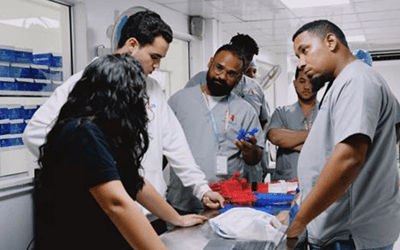Team DRIFT’s Mission: Using Robotics and Innovation to Change Lives
Authors:
Maura Osorio Rojas – Team DRIFT Captain
Dr. Brian Kelly – Head of School
Dr. Kulangara Jacob Johnson – Director of Innovation & Technology
At Carol Morgan School, innovation is not just about technology — it’s about using knowledge and creativity to change lives. Team DRIFT, the school’s distinguished robotics team, has exemplified this philosophy, proving that engineering is more than competition; it is a powerful force for social good. As they embark on their journey in the 2025 FIRST Robotics Competition (FRC) season, Team DRIFT is not just building robots—they are building a legacy of compassion, inclusion, and transformative change.
Through their heartwarming initiative to create 3D-printed prosthetics for children and adults in need, Team DRIFT is redefining what it means to be an innovator. Their work extends far beyond the walls of their robotics lab, reaching individuals whose lives are forever changed by their efforts. By combining STEM education with a deep commitment to community service, these students are proving that technology is not just about advancement—it’s about humanity.

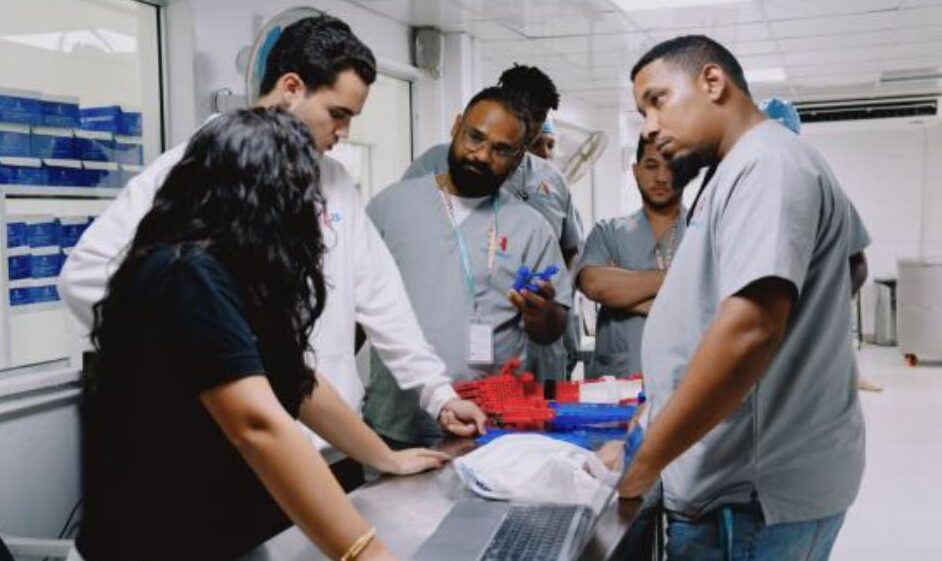
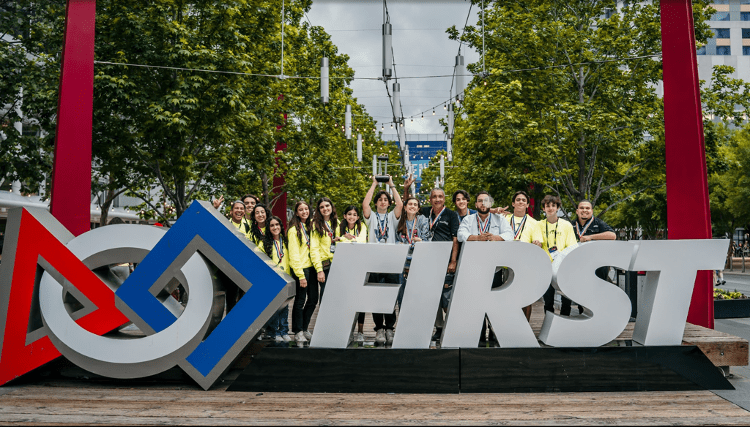
The 2025 FIRST Robotics Competition (FRC) season, themed REEFSCAPE℠, challenges teams to push the boundaries of innovation, engineering, and teamwork. More than just a robotics competition, FRC is designed to inspire the next generation of problem-solvers by combining technical skills with leadership, creativity, and community outreach. One of the most prestigious honors in the competition is the FIRST Impact Award, which recognizes teams that go beyond building robots to make a lasting difference in their communities. This award celebrates teams that embody FIRST’s core mission of inspiring young people to become leaders in science, technology, and innovation while promoting a culture of sustainability, inclusion, and mentorship.
To earn the FIRST Impact Award, teams must demonstrate a long-term commitment to spreading STEM awareness, supporting other robotics teams, and addressing real-world challenges through outreach efforts. The submission process includes a written essay, a video presentation, and an in-person interview with judges, where teams share their journey, impact, and vision for the future. Past award-winning teams have launched global STEM initiatives, mentored younger students, and developed projects that create meaningful social change.
As Team DRIFT takes on this challenge, we are committed to using our passion for robotics not just to compete but to build a legacy of innovation and community service—one that aligns with the values of FIRST and showcases the power of technology to transform lives.

Engineering Impact: Team DRIFT Goes Beyond Robotics
At Team DRIFT, we believe that robotics is more than just a competition—it’s a tool for innovation, empowerment, and social change. As part of our commitment to FIRST’s mission and our pursuit of the FIRST Impact Award, we have launched an initiative that uses robotics and engineering to transform lives. This project is not just about building machines for the field; it’s about harnessing technology to make a meaningful difference in the real world. By integrating 3D printing, engineering design, and humanitarian outreach, we are working to provide low-cost, high-impact prosthetic solutions for children and adults in need. We aim to make advanced medical solutions more accessible, empower students through hands-on STEM education, and foster a cycle of lasting impact in our community and beyond.
Our journey began in the summer of 2024 when we partnered with IMA Helps and Mr. Jondarr Bradshaw, who introduced us to the Great Lakes Science Center’s Robotics Initiative and the Hands Across Borders Network. Through these connections, we became part of a global movement focused on leveraging technology for humanitarian purposes. We quickly realized the power of 3D printing in prosthetics, an innovation that allows for personalized, cost-effective solutions. Unlike traditional prosthetics, which can be prohibitively expensive, 3D-printed prosthetic hands and arms provide a much more affordable and adaptable alternative, making them accessible to underserved populations.
In the Dominican Republic, seven out of ten school-aged children with disabilities do not attend school, and 56% of people with disabilities aged 18 or older are unemployed, highlighting significant barriers to economic participation. Many children and adults with limb differences lack access to affordable, functional prosthetics, limiting their opportunities in education and employment. By introducing low-cost, 3D-printed prosthetics, we are not only providing a life-changing alternative but also encouraging young people to explore careers in STEM, biomedical engineering, and assistive technology. This initiative aligns perfectly with our team’s mission: spreading education through technology and using engineering to change lives.
“This project is a perfect example of how technology can create real, tangible change in our community. Seeing our students apply their engineering and problem-solving skills to improve lives has been inspiring. They’re not just learning; they’re making a lasting impact.”
–Aleunys Mercedes, Team Mentor

From Concept to Reality: Building Custom Prosthetic Solutions
After an initial planning phase, Team DRIFT took a significant step forward by visiting the Asociación Dominicana de Rehabilitación, the only rehabilitation center in the country, to tour the facilities and learn about the current prosthetic fabrication process. This firsthand experience provided crucial insights into the challenges faced by amputees and the limitations of existing prosthetic options. We learned how assessments, measurements, and fittings were conducted for lower limb amputees and applied this knowledge to developing upper limb prosthetic solutions using 3D printing technology.
Students on our team took an active role in every stage of the process. They immersed themselves in 3D design software, such as Tinkercad, to create custom prosthetic hands and arms, ensuring that each device met the specific needs of individual patients. We took patient measurements at the rehabilitation center to guarantee a proper fit, then printed and assembled the prosthetics in our lab. For children we go a step further, allowing them to choose colors that make them feel excited and confident. When Dylan, a six-year-old patient was asked what design he wanted he immediately chose Superman, and now the color of his prosthetic reflects his favorite superhero. This hands-on approach allowed us to tailor each prosthetic for maximum comfort and functionality. It provided our team members with valuable real-world experience in engineering, medical technology, and problem-solving.
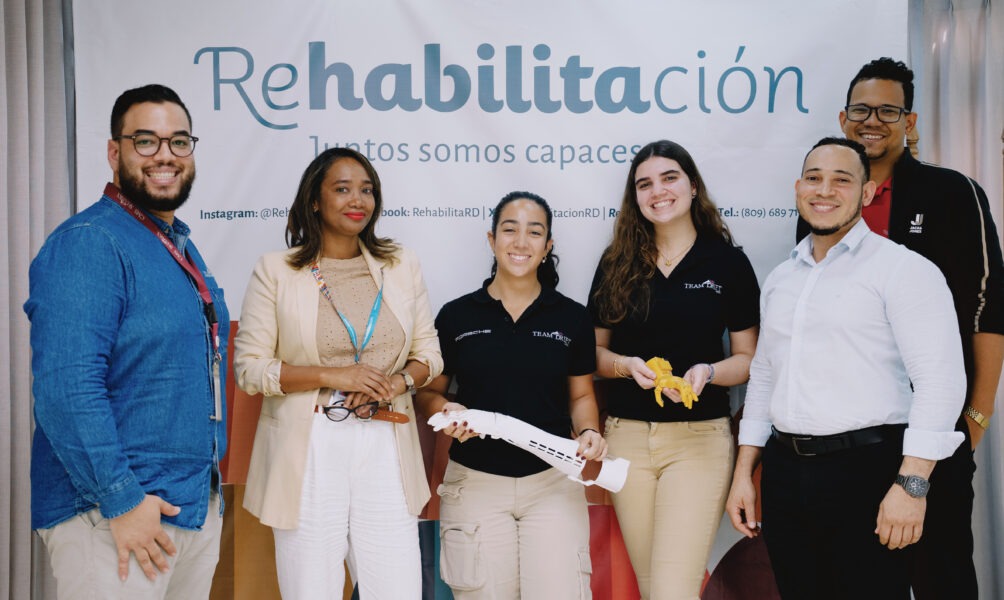
Sustaining the Impact: Education and Future Expansion
Beyond providing prosthetics, we are committed to ensuring the long-term sustainability of this initiative. We plan to donate two A1 Bambu 3D printers to the rehabilitation center to support ongoing production. We also train local technicians in 3D printing, prosthetic assembly, and maintenance, ensuring they have the skills and resources to continue manufacturing and improving prosthetics independently. This knowledge transfer is key to creating a self-sustaining system that will benefit patients for years to come.
Looking ahead, our team is excited to expand this initiative. This summer, in collaboration with the Asociación Dominicana de Rehabilitación, we will host a 3D printing workshop and training program to further educate and equip technicians with the skills needed for prosthetic fabrication. Through this effort, we aspire to build prosthetic devices and expand our impact on more patients. By combining engineering, education, and community engagement, Team DRIFT is changing lives and inspiring the next generation of innovators to continue this work.
More Than Just Prosthetics: Building a Legacy of Change
This project goes beyond simply creating prosthetics—bridging the educational gap in the Dominican Republic and empowering individuals with the tools to pursue quality education and technological advancement. Many children and adults living with limb differences lack access to affordable, functional prosthetic solutions, limiting their opportunities in education and employment. Introducing low-cost 3D-printed prosthetics provides a life-changing alternative while encouraging young people to explore careers in STEM, biomedical engineering, and assistive technology.
Through this initiative, Team DRIFT is not just designing and printing prosthetics—we are shaping the future of engineering and social impact. By leveraging the power of robotics and innovation, we aim to create a world where technology is a tool for competition and a catalyst for meaningful, lasting change. This project exemplifies what it means to use robotics for good. As we continue on this journey, we hope to inspire other FRC teams to embrace the responsibility of engineering for humanity.
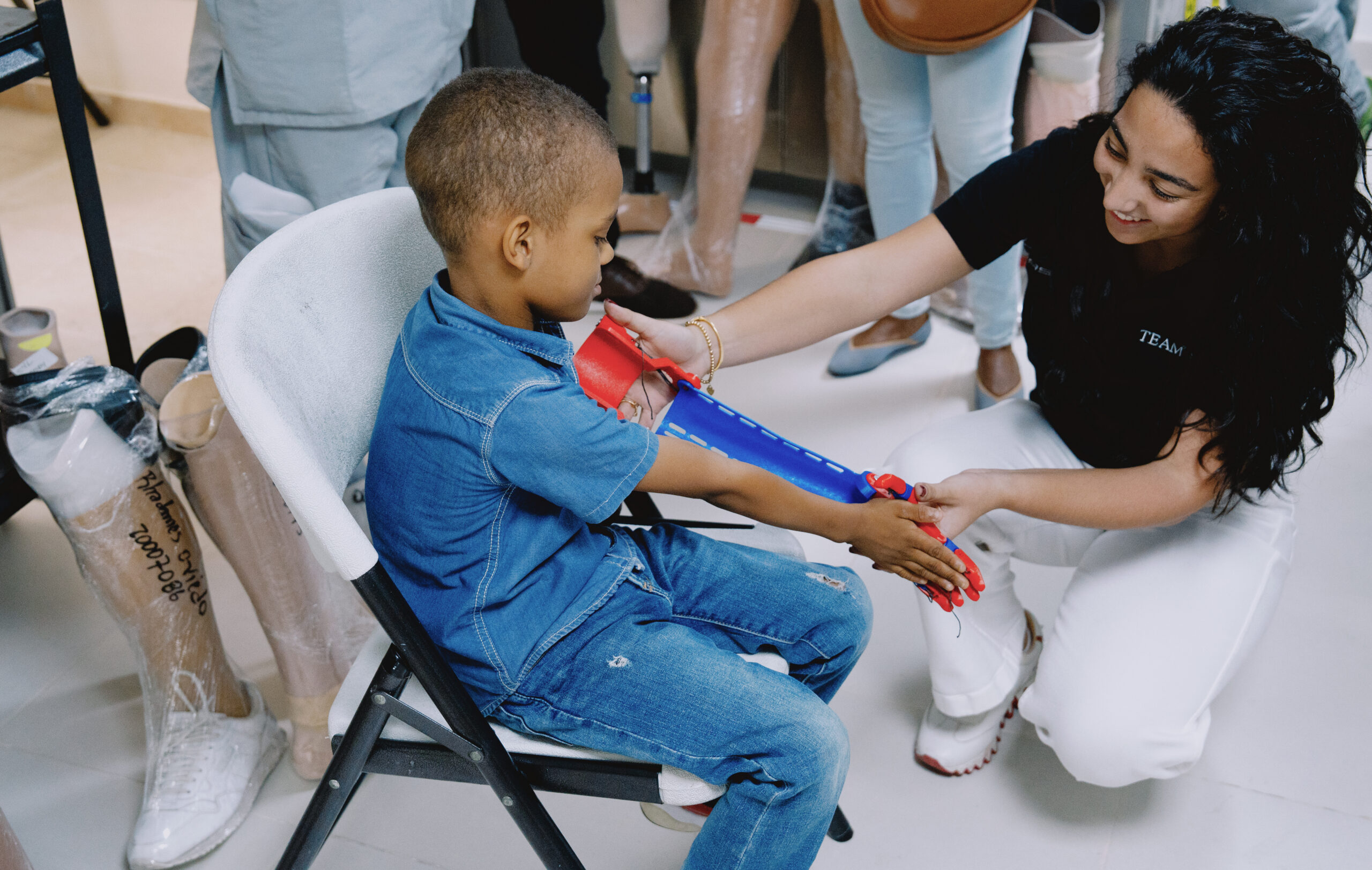
“Being part of this initiative has shown me that even from our role as students, we can start taking steps toward transforming the Dominican Republic into a nation of opportunities. Knowing something we designed and printed can uplift and empower someone is incredibly rewarding. I will never forget the moment I told Dylan, a six-year-old boy, that we would be making a prosthetic for him; he hugged me so tightly that I promised myself to keep working for kids like him, ensuring that no child feels limited by their circumstances.”
-Maura Osorio, Team Senior Captain.
At its core, Team DRIFT’s story is not just one of technical brilliance, but of kindness, perseverance, and the unwavering belief that young people have the power to shape a better world. Through their dedication, they remind us all that the true purpose of innovation is to uplift, empower, and bring hope where it is needed most.
You can watch the Team DRIFT Impact Award video here. Interested in learning more or supporting Team DRIFT? Contact teamdrift@cms.edu.do

